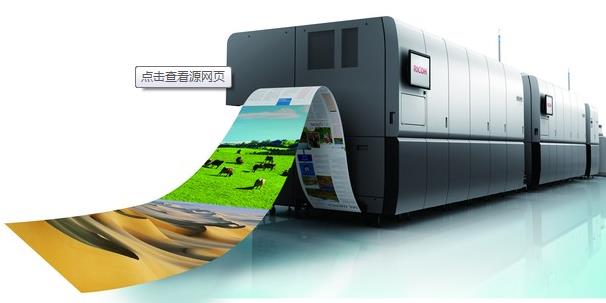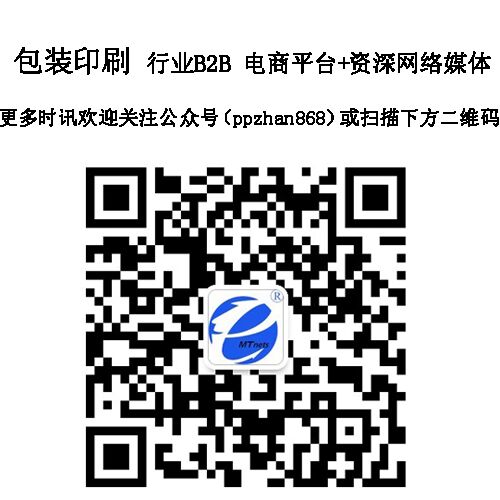Introduction: As on-demand printing becomes a key word in the printing industry, more and more publishers are either waiting to see or start getting involved in digital printing. Throughout the moment, the market breakthrough point of the printing link is concentrated in the software fields such as concept change and copyright protection. On the contrary, the hardware matching ability of the post-press link is gradually becoming the focus of digital printing in the field of books and periodicals.



As on-demand printing becomes a key word in the printing industry, more and more publishers are either waiting to see or start getting involved in digital printing. The development of the on-demand printing business is a systematic project. If the personalized digital printing makes the publishing industry start to publish on demand, then the maturity of digital post-press technology has given us a personal experience of on-demand publishing. Throughout the moment, the market breakthrough point of the printing link is concentrated in the software fields such as concept change and copyright protection. On the contrary, the hardware matching ability of the post-press link is gradually becoming the focus of digital printing in the field of books and periodicals.
Almost on the same day, China's two major book import and export companies - China Book Import and Export Group Corporation, hereinafter referred to as China Graphics and China Education Books Import and Export Co., Ltd., referred to as the Chinese education map, have launched on-demand printing projects. Among them, China Graphics Company announced that it will realize 24-hour global direct supply of Chinese books, and at the same time enable Chinese readers to read books from all over the world in a short time; the Chinese education map also uses “one print, on-demand, global distributionâ€. "The concept is to establish a POD on-demand publishing international alliance with Chinese and foreign publishers, distributors and users.
At the same time, the two projects launched the focus of the publishing industry on on-demand publishing and digital printing. At the same time, we also saw that in addition to these two companies, many publishers are also watching the development of digital printing. A handful of publishers have been involved in the development of on-demand printing business many years ago, but at this time people can't help but ask, what prompted publishers to personally participate in the business of book printing? In addition to the continuous advancement of printing technology, the rise of digital post-press technology has further promoted the revolution in the publishing industry.
From "one print, different Zhang" to "one book, the book is different"
In the early days of digital printing, it was mainly used in "ultra-small batches", from a few to dozens, and hundreds of copies. Postpress processing relied mainly on small devices, either manual or semi-manual. Nowadays, digital printing has been moving toward high-speed and industrialization, which requires that the subsequent processes can also be industrialized. The good news is that digital post-press technology has lived up to expectations, and many manufacturers now offer industrial solutions such as MBO, Martini, Hendry, and Precision. And it is the digital post-press solution that extends the digital printing production line. If digital printing is “paper-to-printed paperâ€, then extending to digital printing is “from paper to finished bookâ€, which is From "one print, different Zhang" to "one book, the book is different" change.
From digital printing to on-demand publishing
For many domestic book printing peers, their impression of the “printer-independent†digital post-production line comes from the 2012 Drupa show. At that exhibition, MBO, a well-known post-press manufacturer, cooperated with Martini at the exhibition site to demonstrate to the global printing industry peers what is called “the difference between books†and a digital post-production line from web to plastic book. Became the "star" of the scene - digitally printed web prints, the length of the cut sheet is changed by the MBO unwinding device, and then the MBO folding machine controls the pneumatic fence according to the processing information, for each sheet of paper The printed matter is folded in different ways to form different signatures. Afterwards, the stacking device stacks the plurality of signatures into a booklet and sends them to the binding equipment according to the preset. The binding equipment mills the backs of different thick and thick books according to the preset information. With cover, drying and three sides. In this way, after the production line, people see a personalized book with different thickness and different format.
If personalized digital printing has made the publishing industry start to publish on demand, then the maturity of digital post-press technology has given us a personal experience of on-demand publishing. We can see that a book of different formats, thicknesses and contents can be output online at the same time. Only at this time can we really forget the concept of traditional printing mass production. At the same time, we will be amazed at the amazing production speed of the digital post-production line. Although it produces different books, it is also the level of industrial production.
This is the charm of digital post-printing. It also inherits the personalized and on-demand characteristics of digital printing, and on this basis, it is automated to achieve connection production.
Thanks to this, we can imagine that the books edited and planned in the future can not only have personalized content, but also have personalized covers and even personalized formats.
From traditional warehouses to printing workshops
The author had the privilege of visiting the digital painting workshop of Zhongjiatu in Daxing District, Beijing. It is located on the second floor of a building. The workshop is spacious, bright, neat and orderly. The digital printing machines of various production capacities and the post-press processing equipment should be Fully equipped, especially for post-press processing equipment, there are digital post-press lines connected with digital presses, and offline production-type digital post-press lines. The two production lines work together to produce various book blocks for different binding methods. . At the same time, binding equipment such as binding, lock line, and hardcover can post-process the book block.
Seeing such a complete set of equipment, the author suddenly had an idea. In the context of the huge pressure on the inventory of the current publishing industry, is the digital printing workshop not an effective way to solve this problem? We may wish to use the workshop as a library and how much it needs to be shipped out. How many copies were printed. With such a workshop, whether you need one or two copies, or one or two thousand copies, the "digital printing digital post-press" production line can be solved at any time.
Of course, when it comes to this issue, we can't ignore the cost issue, but I believe that with the maturity of various technologies and the increase in business volume, the cost problem will always be solved.
From printing house to publishing house
In the digital wave, every publisher feels the pressure, and the development of digital publishing has become a path that the publishing industry has to take. We see that the current publishing industry, digital publishing is in full swing, and having a mature digital post-production line will undoubtedly be an important channel for linking digital publishing and supporting publishing. As Zhang Jichen, the general manager of the company, said: “The on-demand printing of the Chinese map is not to build a factory, to buy a few pieces of equipment, but to use on-demand printing as a starting point, based on the import and export of traditional publications, to create a kind of New operating models and service methods."
It can be seen that digital printing is not a simple processing method, but an innovative digital publishing or on-demand publishing operation mode. This way, the broken book can be revived, so that niche books have the opportunity to play, so that readers can choose content to print on demand according to their own preferences... In short, digital printing gives the publishing industry more opportunities and development paths.
According to the general idea, the printing thing should always be the printing house. Why are the publishing giants involved in this field? This question has already been raised at the beginning of the article, and in addition to the above mentioned reasons, I am afraid at this point. On the other hand, the digital post-press technology with super high level of automation is also indispensable. Different from traditional printing equipment, whether it is digital printing equipment or digital post-press equipment, although it also has the industrial level, but also does not lose its office features, automatic, intelligent, and clean is its main feature. And the operation tends to be computerized, making it easier for non-professional printing companies to accept.
It is understood that the world's largest paper and electronic content distributors, the United States Ingram content group monthly print volume of 1.7 million copies, more than 50,000 books per day, more than 2000 kinds of e-books are updated every week. Then we also expect that China’s “Ingram†will rise rapidly. At that time, we can also list a series of numbers to shock the world.

Product categories of Beauty&Personal Care Wipes, we are specialized manufacturers from China, Cleaning Wipes, Women Wet Wipes suppliers/factory, wholesale high-quality products of Beauty&Personal Care Wipes R & D and manufacturing, we have the perfect after-sales service and technical support. Look forward to your cooperation!
Skin Care Wipes,Beauty Care Wipes,Personal Care Wipes,Simple Skincare Wipes
Shaoxing Extra Beauty Hygienics Co.,Ltd , https://www.cnextrabeauty.com